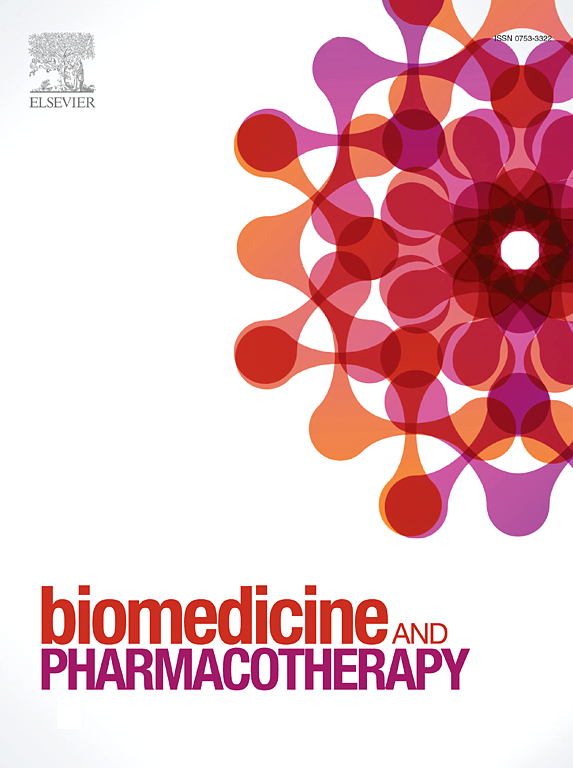A brain-penetrant CDK4/6 inhibitor - AU3-14 shows robust anti-tumor efficacy against glioblastoma
IF 7.5
2区 医学
Q1 MEDICINE, RESEARCH & EXPERIMENTAL
引用次数: 0
Abstract
The cyclin D-CDK4/6-INK4-Rb pathway is frequently dysregulated in glioblastoma (GBM), the most aggressive and poorly prognosed brain malignancy. Despite extensive research, advances in GBM treatment have seen limited progress, with current therapy largely reliant on temozolomide (TMZ), underscoring the need for novel therapeutic strategies. This study explores the therapeutic potential of AU3–14, a potent and selective CDK4/6 inhibitor, for GBM. In CDK4-amplified GBM cell lines, AU3–14 significantly reduced phosphorylation of Rb and levels of cell cycle-related proteins, resulting in G1/G0 cell cycle arrest and senescence. Biopharmaceutical analysis indicated that AU3–14 has high membrane permeability and low P-glycoprotein substrate potential. More extensive pharmacokinetic studies revealed that AU3–14 efficiently crosses the blood-brain barrier, with an unbound brain-to-plasma concentration ratios (Kp,uu) of 1.2 and 0.63 at single oral doses of 10 and 30 mg/kg, respectively, which were 2–4 times higher than those of abemaciclib. In subcutaneous and orthotopic GBM mouse models, AU3–14 demonstrated substantial anti-tumor efficacy and safety. Further toxicokinetic studies in rats and cynomolgus monkeys following 28-day repeated doses demonstrated that AU3–14 is well-tolerated, with a low risk of hematological toxicities, such as neutropenia, which are commonly associated with other CDK4/6 inhibitors. Moreover, AU3–14 enhances TMZ’s anti-tumor efficacy and delays the onset of TMZ resistance. These findings support the clinical phase I/IIa investigation of AU3–14 for the treatment of GBM (ACTRN12621000479808).
一种脑渗透CDK4/6抑制剂- AU3-14对胶质母细胞瘤显示出强大的抗肿瘤功效
细胞周期蛋白D-CDK4/6-INK4-Rb通路在胶质母细胞瘤(GBM)中经常失调,胶质母细胞瘤是最具侵袭性和预后不良的脑恶性肿瘤。尽管进行了广泛的研究,但GBM治疗的进展有限,目前的治疗主要依赖于替莫唑胺(TMZ),这强调了对新型治疗策略的需求。本研究探讨了AU3-14(一种有效的选择性CDK4/6抑制剂)治疗GBM的潜力。在cdk4扩增的GBM细胞系中,AU3-14显著降低Rb磷酸化和细胞周期相关蛋白水平,导致G1/G0细胞周期阻滞和衰老。生物制药分析表明AU3-14具有高膜通透性和低p糖蛋白底物电位。更广泛的药代动力学研究表明,AU3-14有效地穿过血脑屏障,在单次口服剂量为10和30 mg/kg时,AU3-14的未结合脑-血浆浓度比(Kp,uu)分别为1.2和0.63,比abemaciclib高2-4 倍。在皮下和原位GBM小鼠模型中,AU3-14显示出明显的抗肿瘤疗效和安全性。在大鼠和食蟹猴中进行的28天重复给药的进一步毒性动力学研究表明,AU3-14耐受性良好,血液学毒性风险低,如中性粒细胞减少症,这通常与其他CDK4/6抑制剂相关。此外,AU3-14可以增强TMZ的抗肿瘤作用,延缓TMZ耐药的发生。这些发现支持了AU3-14治疗GBM (ACTRN12621000479808)的临床I/IIa期研究。
本文章由计算机程序翻译,如有差异,请以英文原文为准。
求助全文
约1分钟内获得全文
求助全文
来源期刊
CiteScore
11.90
自引率
2.70%
发文量
1621
审稿时长
48 days
期刊介绍:
Biomedicine & Pharmacotherapy stands as a multidisciplinary journal, presenting a spectrum of original research reports, reviews, and communications in the realms of clinical and basic medicine, as well as pharmacology. The journal spans various fields, including Cancer, Nutriceutics, Neurodegenerative, Cardiac, and Infectious Diseases.

 求助内容:
求助内容: 应助结果提醒方式:
应助结果提醒方式:


